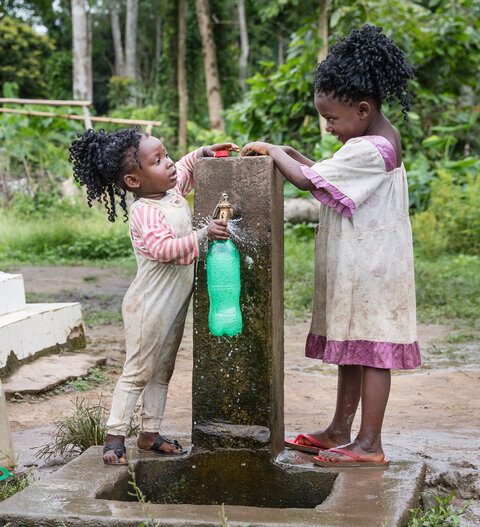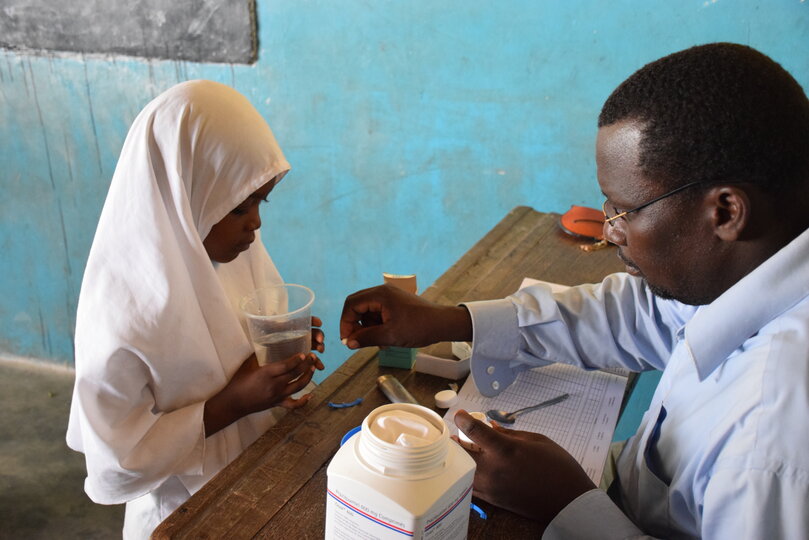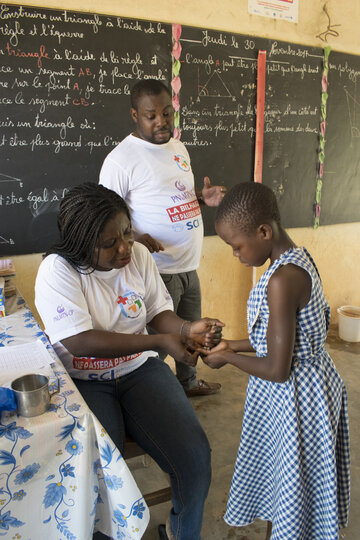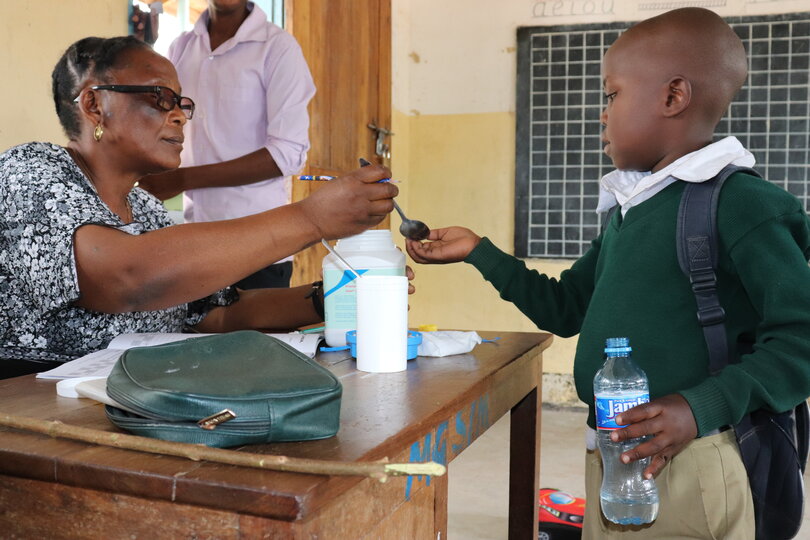Control and Elimination
How do we control and eliminate schistosomiasis?
Treatments
Schistosomiasis can be treated with Praziquantel, a tablet that can be administered orally at a dosage of 40mg/60mg per Kg. Praziquantel is effective against all species of adult schistosome worms, however it is less effective against the juvenile, maturing worms, therefore treatment needs to be administered in two sessions one to kill off adults and a second, at least 4 weeks later to kill off any schistosome worms that were juveniles at the time of the first treatment.
Praziquantel is a safe treatment with few side effects. However when adult worms die, they release antigens in the blood which can cause the body to react, this often results in cramping, discomfort and nausea. If a person is only infected with a few worms they are unlikely to experience any of these symptoms. If a person is heavily infected, when they receive treatment they are more likely to suffer from some stomach pain and nausea, however this is temporary and will self-resolve.
When treating children it is recommended to give Praziquantel with some food and water to help digest the drug and to help with any side effects caused by the dying worms. Children receiving treatment should be monitored by a health professional to help manage any discomfort caused by the dying worms, and to respond in the unlikely event of an allergic reaction.
Preventive Chemotherapy
Praziquantel is the treatment of choice for all schistosome infections. It can not prevent re-infection from larval cercariae when a person comes into contact with contaminated water. Unfortunately the areas where schistosomiasis thrives are characterized by lack of access to safe water and sanitation. Natural water bodies are used as sources of water for bathing and washing, where exposure to schistosome cercariae can be high. Lack of sanitation in these areas means that occupations linked to water, e.g. fishing and cultivation have a high risk of contracting schistosomiasis infections.
This means that treatment needs to be repeated to control infections and to mitigate the damage caused by the schistosome eggs. This process of repeated treatment to prevent the development of the disease is termed Preventive Chemotherapy. It is the cornerstone of schistosomiasis control.
Praziquantel Donation Programme
Praziquantel is donated by Merck through the WHO Praziquantel donation programme. Merck has pledged 250 million tablets for the treatment of schistosomiasis.
Treatments are distributed to school-aged children to prevent the damage caused by schistosome infections and to control and eliminate schistosomiasis as a public health problem.

Key Components for the elimination of schistosomiasis as a public health problem
Water, Sanitation and Hygiene
Schistosomiasis is a water-borne disease. Water is the medium where transmission occurs. Both people and the aquatic snails (carriers of schistosome worms) become infected in water. It is not surprising that a common characteristic of communities plagued by this disease is the lack of access to safe, clean water. These communities must turn to open, natural water-bodies to wash, clean, drink and bathe, increasing the risk of exposure to these worms.
In addition areas that lack access to safe, clean water also tend to lack easily accessible sanitation and hygiene infrastructure. Thus open urination and defeacation are common. Any body cleansing activity will be done using the nearest water body. This supports the life cycle of the schistosome parasite by giving the schistosome eggs ample routes and opportunities to enter the local water body and infect an aquatic snail.
Treating children with Praziquantel will prevent the development of the disease, however it will not stop them from getting reinfected. It only takes a few infected individuals to contaminate a water-body and infect the aquatic snail, leading to the re-establishment of schistosomiasis as public health problem for that community. More is needed to move towards the sustained elimination of schistosomiasis as a public health problem. To achieve this investment in improving accessibility and practices of Water, Sanitation and Hygiene (WASH) is crucial.
Investment in WASH infrastructure will provide communities with better, user-friendly alternatives to the use of open water bodies and the practice of open urination and defeacation.
Behaviour Change and Community Engagement
The provision of WASH infrastructure is a key component for the sustained elimination of schistosomiasis as a public health problem. Another key component is the promotion of behaviour change and community empowerment.
Snail Control and Environmental Management
Although often controversial, snail control can have an important aspect to play in schistosomiasis elimination as a public health problem. In fact countries that have succeeded in eliminating schistosomiasis have used snail control. There are different methods and strategies available and they can be used effectively in the right context. An important requisite of each method is to only use it where specific aquatic snail species live and where transmission is known to occur. This is for both ecological and efficiency reasons.
Different methods and strategies of snail control are:
- Snail Control through chemical application
- Snail Control through biological control
- Snail Control through environmental management
- Snail Control through genetic techniques



